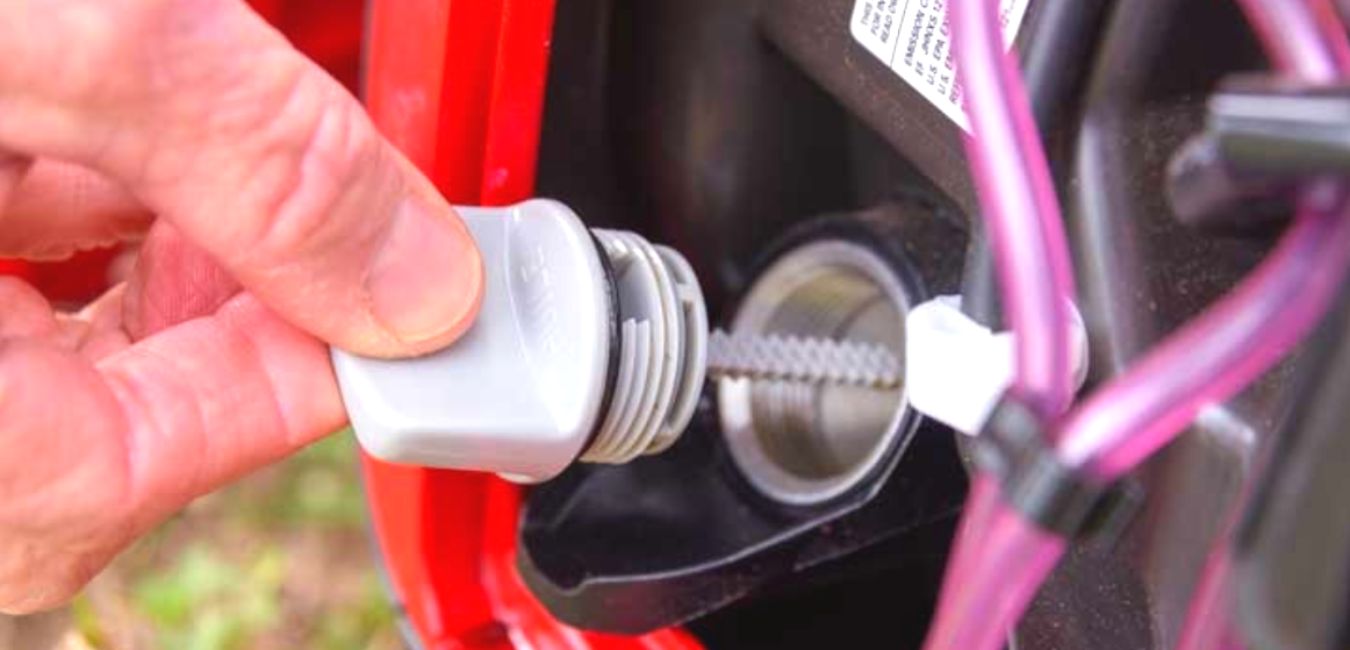Storing a generator safely is a serious issue because if not saved properly it may get rust. People frequently ask us about the safest and most reliable method to keep a generator and fortunately, your problem is going to get solved. We have resolved to provide the best services that they have ever imagined.
In this article, we will discuss in detail the long-term and short-term storage processes. But there are some concerning points that one must notice. First of all check the user manual that which type of fuel is suggested in it and use oil accordingly. oil plays a very important role in the performance of the generator.
I would recommend you use ethanol-free gas because it can separate from fuel over a lengthy period of time and harm your engine and fuel lines. The longer you use this fuel, the more trouble you will avoid, despite the higher cost.
Now, let’s move toward the steps:
Step by Step Method to store the generator
1. Check the Oil
Your generator won’t use a lot of oil if there are no leaks and it is in good condition this also depends on which company generator you are using. Don’t ever rely on cheap and inexpensive products as they are not going to last longer. However, you should check and top off the oil levels before putting it in storage. Regular engine oil is acceptable. Consult your owner’s handbook for more detailed information about the oil.

2. Drain the Gas
Before putting the generator in storage, you should ideally run it dry of gas. You shouldn’t keep your generator in storage with a tank of combustible gas inside. There are several serious fire hazards in addition to that one. However, that isn’t the only problem. There is also a significant fire risk. It’s possible that this leftover gasoline won’t run the generator when you need it the next time because it can spoil in the open air.
Additionally, while the generator is being stored, the gasoline might seriously harm a number of its components. It is not really an option to let untreated gasoline run in the generator.
If you are unable to run the tank to empty, you should add a fuel stabilizer to a full tank of gas in the generator. To ensure that the stabilizer is distributed evenly throughout the system, start the motor for a minute. By keeping the fuel from gathering moisture and spoiling in the tank, the fuel stabilizer will aid in preserving the fuel.
Additionally, it will stop your generator’s rubber and plastic components from being eroded by gasoline. In this manner, it ought to start easily the following time you need it and with a full tank of petrol, no less.
3. Check for any damaged parts
Make sure you thoroughly inspect the generator before storing it. Replace any components that seem to be damaged or are beginning to exhibit wear and tear. The damage could get considerably worse day by day the generator is being stored if you don’t repair these components. Parts you should examine include:
Fuel tank, Hoses, Wheels, handles, and spark arrester switches
4. On-time maintenance
You might have observed that generators will last much longer with a little annual maintenance. Make sure you perform this yearly maintenance at the beginning of hurricane season to avoid any problems while a storm is approaching. The two actions you must take are:

- Change the spark plug.
- Change the air filter.
The instructions in your owner’s manual should be able to walk you through both of these simple actions. However, if you have any concerns, our staff can assist you with the procedure.
5. Remove debris and scuff marks
Before storing it, you should give your generator a final wipe-down. Clean up any debris from the generator’s exterior and clean up any oil or fuel that has been spilt on the ground. Seals and switches might become worn out if dirt and debris are left on the generator. The task only requires a quick clean-down with a rag.
How to Store a Portable Generator
It is easy to store a portable generator for a brief period of time by adding a fuel stabilizer or by running it once per week. You must, however, follow the recommended storage practices if you want to keep your portable for a long period.
How long your generator will be idle is the first thing you should decide before storing it. Because the method for storing or winterizing will depend on how long it will be left unused.
If there isn’t much time between your camping trips, the storage process is typically pretty simple. On the other hand, if you plan to store the unit for a long time, the process is a little more complicated.
Now let’s read the long-term and short-term storing methods:
Long-term generator storage method
It can be difficult to store a generator for more than a few months to a year or two. For your generator to remain functional and perform when you need it, you must adhere to the correct storage technique, which entails several procedures.
But after you’ve done it a few times, the long-term storing process likewise becomes simple. To keep your generator in peak condition when it is stored for a lengthy period of time, you must take the following steps.
1. Remove all fuel from your generator
When keeping the unit for a lengthy amount of time without usage, the gasoline in the generator’s fuel tank is the main cause of issues. It is known that gasoline oxidizes over time, particularly gasoline combined with ethanol.
As a result, your gas starts to deteriorate and over time, it starts to produce a gummy-like substance that clogs the fuel system, causes it to rust, and otherwise damages it. To prevent fuel-related problems during storage, you must either use a fuel stabilizer or drain your gasoline tank.
2. Drain the Carburetor
Fuel-related problems cannot be resolved by draining the fuel tank of your generator. The gasoline tank of your generator must be entirely drained to resolve fuel-related problems.
The carburettor on your generator can be easily drained by removing the drain screw until gas begins to flow out. Running the generator after siphoning the gasoline tank, on the other hand, will use up any remaining gasoline in the carburettor and fuel lines.
3. Fogging oil can be used to avoid harm.
When the generator is in storage for a lengthy period of time without usage, the engine cylinder is an empty and perfect spot for moisture to form. Due to moisture, rust may build over time and eventually cause your engine to fail.
You need to fill the engine cylinder with a few scoops of the engine or spray fogging oil to stop this from happening.
4. Disconnect the battery
When storing a generator for an extended period of time, it is necessary to remove the battery if it has an automatic ignition system. This is so that your generator won’t start since the battery when plugged into the device, will experience a parasitic drain that causes a dead battery.

Remove the plugs and keep the battery out of direct sunlight in a dry, cold location. In order to keep the battery charged and stop it from running out, you should also use a battery extender.
5. When the generator is stored, run it.
Exercise your generator once or twice a month to maintain it healthy and out of harm’s way if you intend to store it with fuel in it.
However, when it comes to keeping a gas-powered generator with fuel inside of it, there is no substitute for a strong fuel stabilizer. There is one more thing you should do, though, to maintain the equipment’s condition and ensure that any issues are found in time before the camping season begins.
The moving parts will stay active and lubricated if your generator is used once or twice a month for an hour or two with the load. The old fuel will be used up, and you’ll have to refuel with new petrol as a result.
Additionally, keeping the generator running while it is in storage will prevent moisture-related problems that could become critical.
Short term Method
Despite the importance of the aforementioned safety and protective factors, there is still the issue of access. You don’t want to go a quarter-mile across a mountainous or forested area of your property and lug your generator up to the home in the midst of a hurricane.
If there is a time between an emergency alert and a power outage, you might wish to transfer your generator from long-term storage and set it up such that it is ready for use while still keeping it covered by a tarp or generator canopy.
How to Store a generator Outside
You are allowed to put a portable generator outside of your home, but not directly overhead. For protection from the elements, you must store them in a covered area or generator enclosure.
If you don’t like the notion of keeping your generator inside, you can keep it securely covered or enclosed outside. They are a great choice for storing the unit far from your house while keeping all dangers outside.
Outdoor shades do have drawbacks, though, as poorly or excessively ventilated generators suffer.
A small cramped shade will heat up inside during the hot summer months due to insufficient airflow. As a result, there will be more gas fumes from evaporation inside the shade, raising the possibility of a fire.
On the other side, excessive ventilation will allow too much moisture, precipitation, or snow to enter. This will exacerbate moisture-related problems including corrosion and rust.
To avoid this, check that the shade is clean, has the appropriate amount of airflow, and is not already mouldy or crumbling. To keep your generator outside, however, if you don’t already have one, purchase an all-weather outdoor storage shade.
How to Store a Generator – FAQs
Conclusion
The most dependable source of power for your RV when boondocking is a portable generator, therefore maintaining it is crucial. Although initially keeping a generator could seem too difficult or time-consuming, it will quickly become simple once you get used to it.
Maintaining your RV’s health in storage and keeping it powered when needed can be accomplished by following the advice and guidelines we have covered above.






